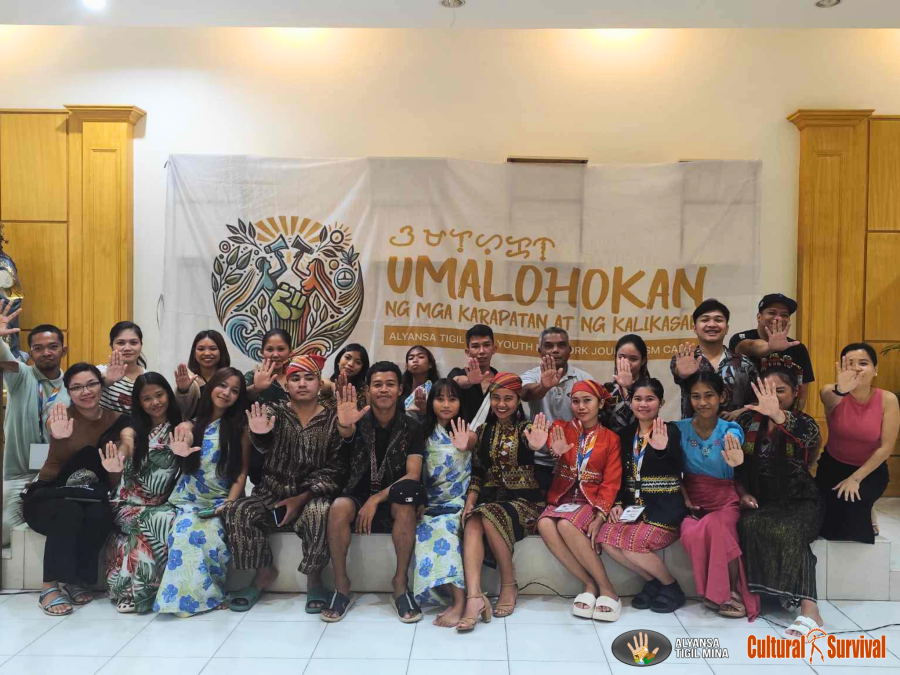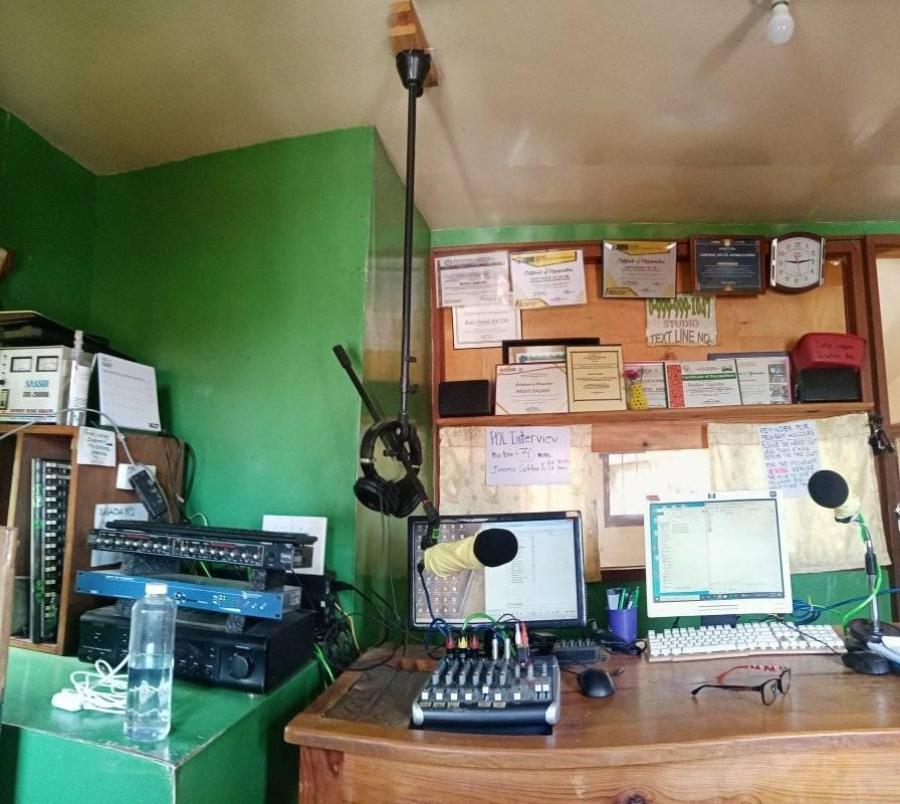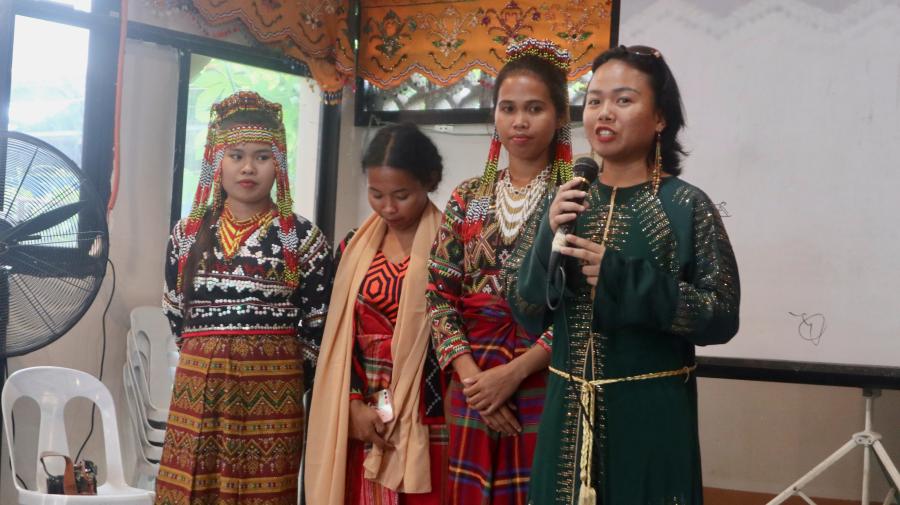Even with the advent of international declarations and legal instruments that promote indigenous peoples’ rights, discourses on policies and programs affecting indigenous peoples continue to surface in academia and more proactively in international civil society movements. One of the vital concerns is indigenous peoples’ education that is discussed vis a vis human rights and policies on traditional knowledge. Some international bodies, such as the United Nations Educational, Scientific, and Cultural Organization, are currently affirming and promoting indigenous peoples’ rights to education. Such affirmation challenges how states and civil society look at indigenous peoples’ concerns and how indigenous peoples respond to these concerns. Scholars have argued that indigenous peoples’ education needs to be built on context-specific learning systems. A micro-level learning system as practiced by the Ifugao village of Mayoyao in the Philippines demonstrates how these learning systems relate to sustainable human development.
Indigenous knowledge and learning systems have long been recognized as indispensable components of indigenous peoples’ education, but formal educational systems usually neglect this indigenous knowledge. Thus Ifugao students learn about Shakespeare but remain ignorant of their own epics such as the Hudhud and the Alim. They study mathematics and the Egyptian pyramids are but do not know how their own ancestors built the spectacular mountains of pajaw (rice terraces) and the thatch-roof and nail-free wood houses called phalay in northern highland Philippines. The Mangyans of Mindoro learn Western poems but not their oral traditions that have been inscribed in their famous ambahan poetry.
As a consequence, indigenous peoples have developed an ideal type of human development in which Western education is core and is identifiable with progress or civilization. They thus perceive indigenous knowledge as obsolete or inferior. Formal education, as promoted by the state, has contributed to the marginalization of indigenous knowledge.
Traditional Ifugao Knowledge
The Ifugaos are among the ethnic groups living in northern Luzon, particularly in the Cordillera region. Culture and language variations subdivide this group into three parts: the Tuwali (found primarily in the communities of Kiangan and Lagawe), the Ayangan (found primarily in the communities of Banaue, Hingyon, and Hungduan), and the Henanga (found in the communities of Mayoyao and Aguinaldo). Despite being labeled a fifth-class municipality, the province of Ifugao is endowed with rich vegetation. Mount Amuyao (approximately 2,780 feet above sea level) and Mount Polis, which are among the 10 highest Philippine mountain peaks, are found in Ifugao. The Ifugaos trace their ancestry to two legendary figures: Pfukhan and Gwikhan. Known as legendary ancestors, their names are normally invoked during rituals. The Ifugaos have long depended on wet rice farming and have developed a profound rice farming tradition.
In the past, ap-aphochan chi pi’takhuwan was a phrase that captured a desired way of living in the Henanga community. Local people normally desire an abundance of resources and a healthy physical and mental condition. This way of living is manifested by good harvests of palay and other crops, especially those that are planted in swidden farms; healthy chickens and pigs, which are highly sought during rituals; an abundant water supply; favorable weather; and a house and well-placed environment in which to live. This perspective can also be drawn from the way Ifugaos talk of their past life experiences and also in the eight volumes of Mayawyaw Ritual by Father Francis Lambrecth. Such desires were normally cultivated in the mindsets of children while they were shown practical examples of living and ways of generating wisdom and skills by traditional priests, arbiters, and their parents. In fact, parents would direct their children to be exemplar individuals in the community as well as in the neighboring villages. Children were encouraged to know generations of their ancestors and to learn ritual myths, invocations, and technical skills. The Henanga considered it prestigious to trace one’s ancestry to a lineage of the mun-alon (arbiters), munpfuni (priests), mun-apfua-ab (skilled in invocation of the ancestors), montapeng (skilled in stone riprapping), and mompakhad (skilled in traditional house structure). Children looked up to these experts as they grew in a community where kinship was highly valued.
Today, many indigenous people in the Philippines who have gone through the formal Western educational system can hardly trace their ethnic identity. Even at the tertiary-level, indigenous students know little about their culture and history. No tertiary level curriculum in the Philippines offers a general course on indigenous culture and history. Some teachers try to integrate local knowledge in the curriculum but many of them are handicapped by the lack of knowledge and teaching strategies.
U.S. Education in Northern Luzon
In the 19th century, the Spanish missionaries Juan Villaverde and Julian Malumbres introduced a number of Ifugaos to reading and writing as well as other more practical skills. During the American occupation, classes were taught irregularly by soldiers of the American military who visited the village of Kiangan between 1900 and 1903. It was only in 1904, when the Bureau of Education sent James Travis to open a school in Kiangan, that organized American educational effort sbegan in Ifugao. Other schools followed, including Banaue in 1905, opened by Henry Otley Beyer, and Mayoyao in 1908, opened by Benjamin Blitz.
At first, the Kiangan school was received well by the Ifugaos of the area and an attendance of 150 pupils was reported. But a remarkable decrease in interest occurred when pupils were introduced to the American curriculum and when parents realized that their children were not contributing directly to the household needs. The Ifugaos were not familiar with the American educational process and this knowledge was of uncertain benefit—seemingly unequal to the services the children traditionally provided at home such as caring for younger siblings, chopping firewood, or helping in the fields. Indeed, many parents discouraged their children from attending school, believing they were getting lazy and had not learned anything.
The pioneering teachers tried to employ mechanisms to attract the pupils but those did not last long. Beyer even tried to attract children by providing free lunches in school, but once the free lunch program was discontinued, pupils no longer attended. Some elders still remember that officers rounded up Ifugao children and forced them to go to school. In order to address the decreasing interest of pupils and parents, the Americans used the few Ifugaos who successfully finished the four years of primary-level instruction as examples. Two of these successful students were employed in the American colonial structure at the local level, and later entered politics at the national level. Their communities saw them as successful, and saw the American school system as a passport to better employment and a better future.
Philippine Formal Education
Teachers inside the Philippine educational system are trained in a Western-oriented educational perspective. Western scientific knowledge is promoted and forms the core of the curriculum developed by the Philippine Department of Education. The Philippine education system has historically led indigenous peoples to accept Western knowledge, which has become a measure of progress.
A free public school system was established in the Philippines during the first decade of American colonial rule on the recommendation of the Schurman Commission, the first mission sent to the Philippines by the United States government to investigate the political and economic conditions of the country. In 1901 the Philippine Commission created the highly centralized public school system. The Secretary of Public Instruction brought 600 teachers, known as the Thomasites, from the United States to the Philippines. In 1942, during the Japanese occupation, new educational policies were implemented. The order encouraged the teaching of Tagalog, Philippine history, character education, and emphasized love for work and dignity of labor.
The Education Act of 1982 created the Ministry of Education, Culture, and Sports, which became the Department of Education, Culture, and Sports (DECS) in 1987. The structure of DECS remained practically unchanged until 1994 when the Commission on Higher Education was established to supervise tertiary degree programs, and 1995 when the Technical Education and Skills Development Authority was established to supervise non-degree technical-vocational programs. Thus the Philippines today has a trifocal education system in which the mandate to basic education covers elementary, secondary, and non-formal education, including culture and sports.
In August 2001, the Governance of Basic Education Act was passed changing the name of DECS to the Department of Education and redefining the role of field offices including regional offices, division offices, district offices, and schools. The act was designed to change the public education system in the Philippines by giving more powers and privileges to school administrators and teachers in their respective localities at the policy level so they would have a share in the decision-making process of the Philippine education bureaucratic structure. Unfortunately, many school administrators are not convinced of the value of indigenous knowledge and have not been supportive of these benefits. And even with this added support, many administrators still do not have the capacity to make changes to the curriculum.
Ifugao Learning System
Despite many years of dominance by the U.S.-influenced Philippine formal educational system, some indigenous communities have managed to maintain aspects of their cultures, including their learning systems. Indigenous children at an early age are taught livelihood skills, including those in which they can develop expertise. Beginning at 10 years of age, Ifugao children learn skills such as paot (woodcarving), apfor (weaving), topeng (stone riprapping), and uman (genealogy mapping). Among the Mangyans, ambahan are taught by the elders to the children. During community occasions or informal family gatherings, the young learn the village norms and mores, their family histories and genealogies, and local literature and oral traditions. The learning systems are embedded in highly defined oral traditions and livelihood activities. Thus, learning becomes relevant as it is made part of the daily activities where needs, entertainment, and cultural enrichment are addressed.
Orienting Indigenous Pedagogy
Learning from the impact of Philippine history on indigenous peoples’ worldviews, it is logical for indigenous pedagogy to open venues for indigenous knowledge to be nurtured along with non-indigenous knowledge. We have seen indigenous communities changing and their cultural patterns being modified. Gone are the times when culture can be seen and lived in its pristine and original form; today the idea of purely preserving cultures is largely imagined and only reinforces the marginalization of cultures.
Siaka Kroma, an expert in indigenous learning systems, posits that formal schooling can undermine indigenous knowledge in three ways. First, it fails to put forward indigenous knowledge as worthwhile subject matter for the learning process. Second, it limits the exposure of children to the local knowledge of their communities. Third, it creates attitudes in children that militate against the acquisition of local knowledge. Curricula must be enriched to consider that indigenous knowledge and learning systems play a critical role in the advancement of the lives of indigenous peoples.
In this modern age, if we are to look for a viable approach for indigenous pedagogy and learning systems, we need to ensure that it is consistent with indigenous peoples’ needs and worldviews and considerate of their adaptation to socio-cultural change. Obviously there is an enormous gap between the perceptions of the government education sector and those of indigenous peoples. More than its transformative nature, indigenous pedagogy should be manifested as enhancing human cultural development and the mental well-being of indigenous peoples. It should engender a strong sense of ethnic affiliation and prepare indigenous peoples to be proactive advocates of cultural diversity, an element that can help promote peace in communities. In order for pedagogical approaches to be meaningful, the foundations of learning should cultivate a sense of appreciation for culture, and allow critical exploration of both traditional and scientific concepts and inquiry.
Despite the general mind-set or perceptions of many of the young generation today, it is possible to challenge indigenous students by providing them equal training in Western and local knowledge and capacities so they can excel in both. The important point is that one should not be taught at the expense of the other. In this era of globalization, it is necessary for communities to prepare themselves with a strong cultural foundation.
In her 2002 book on the integration of knowledge systems, African educator Catherine Odora-Hoppers explains, “Indigenous Knowledge Systems enable us to move the frontiers of discourse and understanding of the sciences as a whole and to open new moral and cognitive spaces within which constructive dialogue and engagement for sustainable development and collective emancipation can begin.” In the process of changing the content of the curricula and educational system, an integrated research project—which may be drawn from classroom-based research, teacher training, collaborative projects of various institutions, and the active participation of indigenous peoples—can forward the role of education as emancipatory for indigenous peoples. In this way education is directed at empowering indigenous peoples and helps enhance their role as decisive agents of cultural advancement.
An Urgent Need for Reform
Recognizing that culture is dynamic yet powerful, indigenous peoples should be introduced to Western knowledge systems but at the same time be equipped with the skills to understand the context of such knowledge so they will not look down on traditional culture as inferior. International declarations and other legal instruments promoting the rights of indigenous peoples are not enough protection. Generations of indigenous peoples need to acquire the proper skills to live in this rapidly changing world. Culturally sensitive pedagogical orientation is necessary to make them vigilant and allow them to act as promoters of cultural diversity.
Considering the marginalization of indigenous cultures by the Western-based education system, it is urgent to revitalize the basic elements of the current education systems to allow indigenous peoples to survive and adjust in an environment that allows the rapid influx of global industries and attendant changes. Indigenous cultures will survive through a strongly nurtured pedagogy that affirms cultural identity. Any system of learning that promotes “imagined cultures” and activities that romanticize traditions of the past that have long changed will only deter the cultural development of indigenous peoples. It is time to elevate the understanding of culture, and correct misinterpretations and the misuse of indigenous cultures. It is when we give true respect for indigenous cultures that we truly recognize indigenous peoples’ human rights. A pro-indigenous education system will contribute a lot to our collective struggle for human development and peace.
Leah Enkiwe-Abayao is an assistant professor of history in the College of Social Sciences at the University of the Philippines in Baguio City, as well a steering committee member of the International Network for Cultural Diversity (www.incd.net). She has a master’s degree in social development studies and is currently pursuing a doctorate in history at the University of the Philippines. She is the author of publications on indigenous knowledge and medicinal plants conservation, and is researching ethno-medicine, biodiversity conservation, and indigenous peoples’ history. This article is an expanded version of a paper Enkiwe-Abayao presented at the UNESCO Conference on Intercultural Education in June 2003 in Jyvaskyla, Finland.
References and further reading
Anderson, B. (1991). Imagined Communities: Reflections on the Origin and Spread of Nationalism, Revised Edition. London: Verso.
Barton, R.F. (1943, October). The Religion of the Ifugaos. American Anthropologist New Series 48:4.
da Cunha, M.C. (1999). The Role of UNESCO in the Defense of Traditional Knowledge. Smithsonian Center for Folklife and Cultural Heritage.
Kroma, S. (1995). Popularizing science education in developing countries through indigenous knowledge. Indigenous Knowledge and Development Monitor 3:3.
Jenista, F.L. (1987). The White Apos: American governors on the Cordillera central. Quezon City, Philippines: New Day Publishers.
Lambrecht, F. (1932). The Mayawyaw Ritual 1. Catholic Anthropological Conference Publications.
Odora Hoppers, C., Ed. (2002). Indigenous Knowledge and the Integration of Knowledge Systems: Towards a Philosophy of Articulation. Cape Town, South Africa: New Africa Books Limited.
Said, E. (1993). Culture and Imperialism. New York City: Afred A. Knoff, Inc.
UNESCO. (2001, November 2). Universal Declaration on Cultural Diversity. Paris: UNESCO General Conference.



